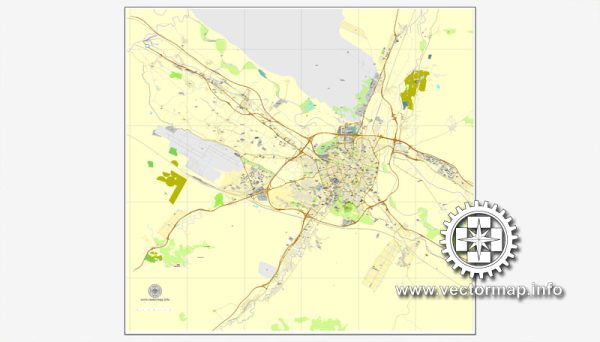Zaragoza, a city in northeastern Spain, has a rich history that dates back to Roman times. Over the centuries, it has evolved into a modern urban center with a mix of historical and contemporary elements. Here is a description of the urban development and key features of Zaragoza, Spain:
- Historical Heritage: Zaragoza boasts a significant historical heritage, with well-preserved landmarks and architectural treasures. The city’s old town, known as the “Casco Histórico,” is a labyrinth of narrow, winding streets, historic squares, and centuries-old buildings. The Basilica of Our Lady of the Pillar, a prominent baroque church, is a major icon of the city.
- Modern Infrastructure: Zaragoza has invested heavily in modern infrastructure. The city is well-connected through a network of highways, a high-speed train station, and an international airport. This has made it a strategic transportation hub in Spain.
- Expo 2008 Legacy: In 2008, Zaragoza hosted the International Exposition, Expo 2008, which focused on water and sustainable development. The event led to the revitalization of the Ebro Riverbank area, which is now a thriving cultural and recreational zone. Some notable structures from the expo, like the Water Tower, remain as part of the urban landscape.
- Eixample: Zaragoza has its own Eixample district, a planned urban expansion area with grid-like streets, similar to the famous Eixample in Barcelona. It features a mix of residential and commercial buildings, parks, and public spaces.
- Sustainable Initiatives: The city has made efforts to prioritize sustainability in its urban development. There are green spaces, bicycle lanes, and pedestrian-friendly areas, promoting eco-friendly transportation and a healthier urban environment.
- Museums and Cultural Centers: Zaragoza is home to various museums and cultural centers, including the Pablo Serrano Museum, the IAACC Pablo Serrano (contemporary art center), and the Goya Museum, dedicated to the works of the famous painter Francisco Goya.
- Universidad de Zaragoza: The city is also known for its university, the Universidad de Zaragoza, which contributes to the city’s vibrancy and brings in a youthful population.
- Zaragoza Logistics Center: Due to its strategic location, Zaragoza is a logistics hub, with the Zaragoza Logistics Center (ZLC) being a prominent institution in the field. It focuses on research and education in logistics and supply chain management.
- Parks and Green Spaces: Zaragoza features several parks and green spaces, such as the Primo de Rivera Park and the Luis Buñuel Water Park, offering residents and visitors areas to relax and enjoy nature within the city.
- El Portillo District: This district is undergoing significant urban development, with modern residential and commercial complexes, contributing to the city’s growth.
Zaragoza is a city that harmoniously blends its historical heritage with modern urban development. It has embraced sustainability, culture, and transportation infrastructure to create a dynamic and attractive environment for both its residents and tourists.


 Author: Kirill Shrayber, Ph.D.
Author: Kirill Shrayber, Ph.D.